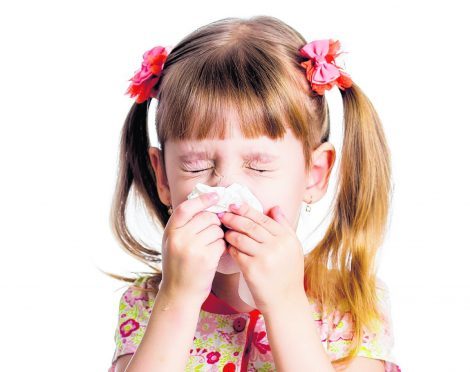It was once seen as a disease that died out decades ago, but cases of scarlet fever are at a 50-year high. Here’s what you need to know …
As recent reports have highlighted, scarlet fever has made an alarming comeback.
Like scurvy and rickets, it was once thought of as a Victorian-era concern, not something that anybody still needs to worry about, but cases have been steadily rising over recent years and are currently the highest they’ve been for five decades.
According to Public Health England, 6,157 children have been diagnosed since September, while 17,586 cases were reported in England during 2015, compared to 1,678 in 2005.
(Scotland does not collect data about scarlet fever cases in the same way as England).
Experts aren’t entirely sure why the disease has returned at such a rate, but the good news is a lot has changed since the Victorian age, when scarlet fever struck real fear.
So what do you need to know?
What is scarlet fever and who gets it?
Anyone can get scarlet fever, but young children are most affected. “Scarlet fever is a bacterial illness that is most common among children under the age of 10,” says Dr Adam Simon, chief medical officer at PushDoctor.co.uk. “Key symptoms include a sore throat, skin infection and the bright pink rash that gives the condition its name.”
This usually starts as red blotches before turning into a fine pinky-red rash that feels like sandpaper. There might be a high temperature, headache and swollen tongue too, usually in the day or two before the rash develops, and nausea and vomiting.
How do you catch it?
“It’s highly contagious,” notes Adam, “and can be passed on by coughing, sneezes, skin-to-skin contact and handling contaminated objects, such as bath towels or bedding.”
Most cases occur during winter and spring. Good hygiene – paying attention to hand-washing, and avoiding sharing potentially contaminated items – can help reduce spreading.
What should you do if your child as it?
In the past, an outbreak of scarlet fever was a very serious concern and children and families affected were often quarantined. While things are different now, it’s still important it’s properly diagnosed and treated, and that necessary steps are taken to avoid passing it on further.
“In the majority of cases, scarlet fever will clear up of its own accord, but it’s always recommended to see a GP if you think you or your child may have it,” says Adam.
How is is treated?
“The usual course of treatment is antibiotics, which will help you to recover more quickly, lower the amount of time you’re contagious for and reduce the risk of complications occurring,” says Adam.
It’s usually a 10-day course, and children should start feeling better after 24 hours, with symptoms clearing up completely after a few days (but it’s still vital to complete the full course of treatment).
Doctors generally advise that anybody infected stays home from nursery, school or work for at least 24 hours after starting on antibiotics too.
Can it be serious?
In the past, scarlet fever was a leading cause of infant death. Better hygiene, and treatments, means it generally isn’t the terrifying illness it used to be and, in the vast majority of cases, will clear up quite quickly and cause little more than a few days of feeling poorly, especially if treated properly.
But as with many conditions, complications – ranging from mild to serious – can still potentially occur.
“Complications are rare and especially easy to avoid if symptoms are spotted and treatment begun early. However, in some scarce cases, potential complications can occur, ranging from relatively simple issues like an ear infection, to blood poisoning and liver damage in more serious cases,” notes Adam.
As ever, if you are concerned about your child’s health, or if symptoms suddenly worsen or change, always get them checked with a doctor.
